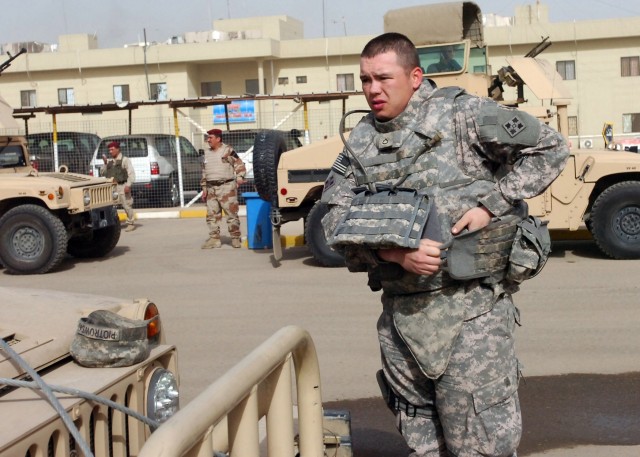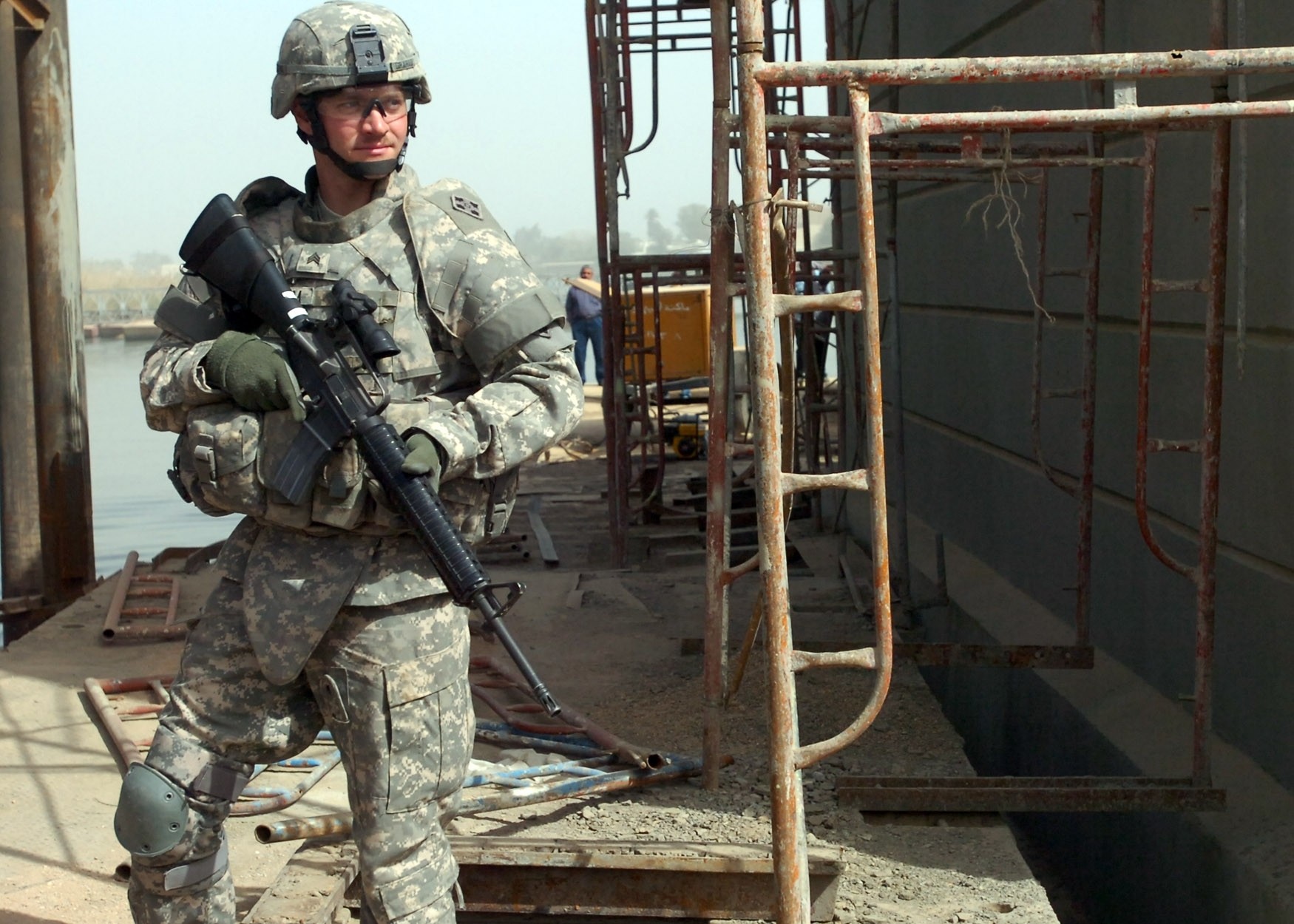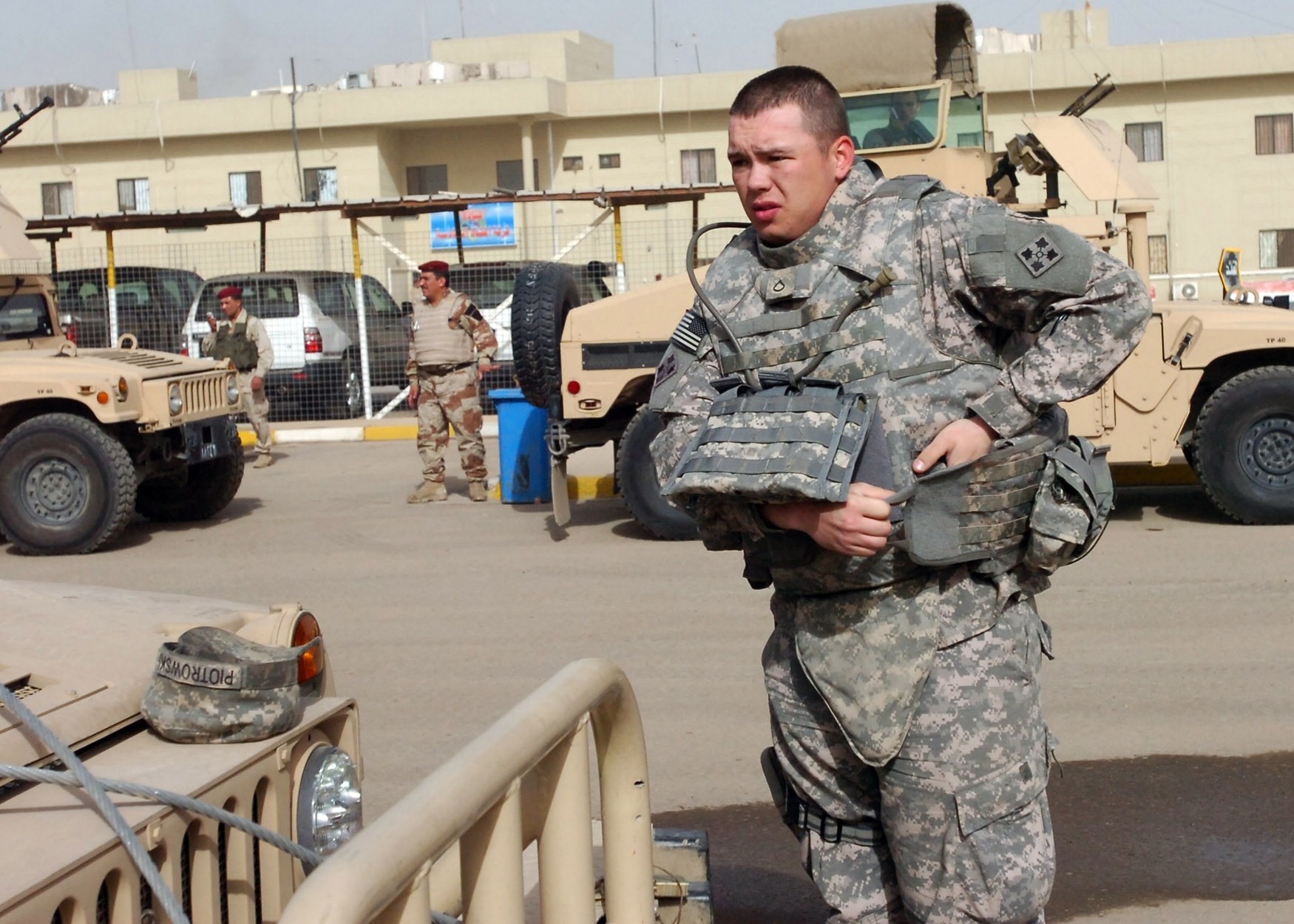BAGHDAD (Army News Service, March 24, 2008) -- After stomping around for a few days with the new Improved Outer Tactical Vest, 4th Infantry Division Soldiers came back with mixed reviews for the new tactical gear.
The new vest has several design differences and some added features, which keep the Soldiers in mind when they're in times of trouble.
The first noticeable difference in the vest design is the way Soldiers don the IOTV. Rather than slipping into it like a jacket, as with the Interceptor Body Armor, they lift it over their head and pull down, which sometimes requires another person to help get the vest on properly.
Soldiers can also detach the fasteners on the wearer's left shoulder, and slip into the vest from the side.
Another key design change is the addition of a quick release lanyard that reduces the vest to its component pieces, which allows the wearer to get out of the vest easily in case of an emergency situation.
Though the troops had mixed feelings about the new vest, they ultimately said the IOTV is a new piece of equipment they will work with the best they can.
"I noticed right away how the weight is more evenly distributed with the new vest," said Pfc. Joe Piotrowski, a native of Chicago, who serves as an infantryman with the 4th Inf. Div., Military Transition Team, Multi-National Division - Baghdad. "However, there's more Kevlar on the inside of the vest, so it got twisted easily and made it uncomfortable."
Piotrowski said he managed to fix the twisted Kevlar inside the vest and hasn't had the problem since.
Soldiers also commented on the increased risk of heat rashes that develop from wearing a large, hot piece of equipment.
"The new vests are more ergonomically correct, but they don't breathe very well," said Sgt. Jayme Turner, a native of Salt Lake City, Utah, who serves as a combat medic with the 4th Inf. Div. MiTT. "With the old system, when it's hot out, you get a little rash in the summer; however, with this system you get a much bigger rash all over."
One of the perks of the new design was a flush front, where Soldiers have more room to attach accessories to carry weapon magazines and other necessary equipment.
"Tactically, it's better because I have more places to put my magazine pouches to make them more accessible," said Piotrowski. "Also, you don't have two sides to worry about; you get to work with the whole front flap, which is nice. I like the built-in side plates as well. They're a lot better than the other ones."
Turner and Piotrowski both said the quick release system was a good feature to have in case of an emergency; however, it needed to be reworked to prevent it from pulling the vest apart when it wasn't intended.
"The quick-release feature was a good idea to help Soldiers get out of their vest in an emergency situation, but I hear it's a pain to put back together," said Piotrowski. "If something does happen where you're submerged under water or something like that, it'll be a lot better to take this vest off rather than the other one where you have to take it off like a jacket. The new system will just fall off of you."
He added that something needs to be done to make the quick-release system not as easy to pull, just to ensure the vest doesn't fall apart during combat operations.
Soldiers have added tape to the cord on the quick release system to prevent it from loosening when it wasn't intended to.
Due to the added components of the IOTV, Soldiers now understand it's not just their weapon and vehicle they need to properly maintain, but their armor as well.
Turner said it's more important to perform preventative maintenance checks and services than with the old system. He explained how he had seen a vest malfunction on a Soldier while climbing into a UH-60 Black Hawk helicopter.
The IOTV was issued to Soldiers who initially received the IBA for their deployment and have 120 days or more remaining on their tour. For the most part, Soldiers are adapting to the new system, and they are working with the IOTV to make it better as the days go on.
(Spc. Aaron Rosencrans serves with the Multi-National Division-Baghdad PAO.)




Social Sharing